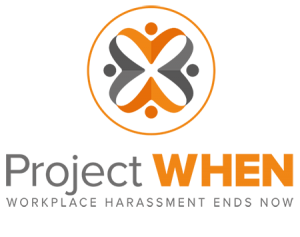Building a Strong Communication Platform: The Foundation of Public Engagement
 For state and local government agencies, an effective communication platform is more than just a website or a social media account—it’s the foundation for transparency, trust, and engagement with the public. However, with rapidly evolving digital trends, changing audience behaviors, and the need for accessible government services, agencies must regularly evaluate and enhance their communication infrastructure to meet the needs of their constituents.
For state and local government agencies, an effective communication platform is more than just a website or a social media account—it’s the foundation for transparency, trust, and engagement with the public. However, with rapidly evolving digital trends, changing audience behaviors, and the need for accessible government services, agencies must regularly evaluate and enhance their communication infrastructure to meet the needs of their constituents.
Government communication leads should conduct careful assessment, strategic planning, and continuous optimization to ensure that messaging is accessible, consistent, and effective across multiple channels. This article explores how government agencies can evaluate their existing platforms, identify areas for improvement, and build an infrastructure that meets the evolving needs of their constituents.
Step 1: Assessing Existing Communication Channels
Before making changes or introducing new platforms, agencies should first evaluate their current communication tools. A comprehensive assessment can help determine which platforms are effective, which need improvement, and where there are gaps in outreach efforts.
Key Questions to Ask in a Communication Audit:
- Website Performance:
- Is the website mobile-optimized and easy to navigate?
- Does it meet accessibility standards (ADA and WCAG compliance)?
- Are citizens able to quickly find important resources, forms, and updates?
- Social Media Presence:
- Are we using platforms that align with our audience demographics?
- Are posts engaging, informative, and receiving appropriate public response?
- Do we have a strategy for handling citizen questions and feedback in the comments?
- Email Newsletters & Alerts:
- Are our open and click-through rates meeting engagement benchmarks?
- Are emails concise, visually appealing, and providing value to residents?
- Is our email list segmented for targeted communication (e.g., by region or interest)?
- Text Message & Emergency Alerts:
- Do we have an SMS alert system in place for emergencies or urgent updates?
- Are opt-in rates high enough to ensure sufficient outreach?
- Print & Traditional Media Outreach:
- Are we still effectively reaching audiences who prefer physical materials (e.g., newsletters, postcards, brochures)?
- Are partnerships with local newspapers and radio stations being maximized?
- How are we leveraging digital signage opportunities?
Why a Channel Audit Matters:
Without regularly reviewing communication channels, agencies risk redundancy, inefficiency, and missed opportunities for engagement. A well-executed assessment provides a roadmap for optimizing communication efforts and ensures public messaging remains relevant and accessible.
Step 2: Identifying Gaps & Exploring New Platform
As communication preferences shift, it’s critical for government agencies to adapt and diversify their outreach strategies to meet the needs of modern audiences. Based on the communication audit, agencies can determine whether they need to:
✅ Expand social media engagement
✅ Enhance digital accessibility
✅ Incorporate more multimedia (video, infographics, live streaming)
✅ Invest in a community engagement app
✅ Improve traditional communication channels
Emerging Communication Platforms to Consider:
1. Live Streaming & Video Content
- Why It Matters: Video content is engaging, easy to digest, and fosters transparency.
- How to Implement: Live-stream town hall meetings, policy announcements, or Q&A sessions with officials on platforms like Facebook Live, YouTube, or local TV networks.
2. Podcasting & Audio Updates
- Why It Matters: Some constituents prefer audio updates while commuting or multitasking.
- How to Implement: A local government podcast featuring discussions on city planning, policy updates, and interviews with local leaders.
3. Chatbots for Government Websites
- Why It Matters: AI-powered chatbots enhance customer service by answering FAQs and guiding residents to relevant resources.
- How to Implement: A chatbot that helps users navigate permit applications, tax forms, or service requests.
4. Mobile Community Engagement Apps
- Why It Matters: Mobile apps create a one-stop hub for residents to report issues, receive alerts, and track local events.
- How to Implement: An app where users can report potholes, track public transportation, and receive local emergency notifications.
5. Expanding Social Media to Localized Platforms
- Why It Matters: Not all community members use mainstream platforms like Facebook and Twitter.
- How to Implement: Engage in neighborhood-focused networks like Nextdoor, where residents discuss hyper-local issues.
Step 3: Ensuring Consistency in Branding & Design
Consistency in branding and messaging helps government agencies build recognition and credibility with their communities. When platforms feel disjointed or outdated, it can weaken public trust.
Branding Best Practices:
- Uniform Colors, Fonts & Logos: Ensure that visual identity remains consistent across websites, newsletters, and social media.
- Clear, Accessible Language: Avoid bureaucratic jargon—use clear, plain language that resonates with all audiences.
- Inclusive Visuals & Representation: Feature diverse community members in imagery to reflect the population being served.
Accessibility Standards:
- Ensure ADA and WCAG compliance for digital content.
- Offer alternative formats (e.g., large-print brochures, audio guides, translated materials).
- Test website readability for people with disabilities (e.g., screen reader compatibility).
Step 4: Implementing a System for Ongoing Review & Optimization
Building a strong communication infrastructure is an ongoing process, not a one-time task. Government agencies must regularly assess and refine their platforms to stay effective.
Key Strategies for Continuous Improvement:
1. Utilize Analytics to Track Performance
- Monitor website traffic (Google Analytics) to see what pages residents visit most.
- Track email open rates, social media engagement, and public survey responses.
2. Encourage Community Feedback
- Conduct online surveys to ask how residents prefer to receive updates.
- Hold public forums or virtual town halls for direct input on communication strategies.
3. Keep Up with Emerging Technologies
- Stay informed on social media algorithm changes to maximize post visibility.
- Consider new tools, such as geofencing technology for location-based alerts.
- Invest in digital translation services to enhance language accessibility.
 Case Study: Oklahoma Department of Wildlife Conservation (ODWC)
Case Study: Oklahoma Department of Wildlife Conservation (ODWC)
To illustrate how these strategies work in practice, we’ll analyze how the Oklahoma Department of Wildlife Conservation (ODWC) successfully transformed its communication infrastructure to create one of the most engaging state agency social media accounts.
Government agencies often struggle with low engagement, bureaucratic messaging, and outdated communication methods. However, the Oklahoma Department of Wildlife Conservation (ODWC) has redefined public engagement by leveraging social media in a fun, relatable, and effective way.
This case study highlights how ODWC applied four key communication strategies to create one of the most engaging and trusted state agency social media accounts.
1. Assessing Existing Communication Channels
Before making changes, ODWC evaluated their existing outreach efforts and found that:
- Traditional outreach (press releases, print materials) wasn’t resonating with younger audiences.
- Social media was underutilized and lacked engaging content.
- Their website had valuable conservation resources, but few people were accessing them.
✅ Lesson for Other Agencies:
- Identify underperforming platforms and analyze audience preferences to refine outreach.
2. Identifying Gaps & Exploring New Platforms
ODWC realized they needed to modernize their communication and meet citizens where they are—on social media. They:
- Shifted to a humor-driven, engaging tone on Twitter, Facebook, and Instagram.
- Used pop culture and trending topics to make wildlife conservation relevant.
- Focused on interactive content (polls, Q&A sessions, and user-generated content).
✅ Lesson for Other Agencies:
- Explore new digital strategies (AI chatbots, video content, mobile alerts) to expand engagement.
3. Ensuring Consistency in Branding & Messaging
One of ODWC’s biggest successes was creating a consistent and recognizable brand voice. They:
- Blended humor with factual accuracy, making conservation fun yet informative.
- Maintained a consistent tone and messaging across all posts and platforms.
- Used engaging visuals and accessible language to simplify complex topics.
✅ Lesson for Other Agencies:
- A consistent, relatable tone builds audience trust and makes government agencies more approachable.
4. Continuous Optimization & Feedback
ODWC didn’t stop at launching a new strategy—they continuously monitored engagement and adjusted accordingly. They:
- Tracked social media analytics to refine content based on engagement levels.
- Encouraged two-way communication by responding to comments and messages.
- Adjusted their posting schedule and content style based on audience behavior.
✅ Lesson for Other Agencies:
- Monitor engagement trends and adapt strategies based on what works best for your audience.
Results: A Blueprint for Public Engagement Success
By applying these four steps, ODWC transformed public perception of government agencies and achieved:
✅ Massive social media growth, with viral posts expanding their audience.
✅ Higher engagement rates, turning passive followers into active participants.
✅ A stronger public image, making them one of the most trusted and relatable agencies in Oklahoma.
Key Takeaways for Government Agencies
📌 Be authentic—a conversational, engaging tone increases trust.
📌 Leverage storytelling—make government services and policies relatable.
📌 Engage with your audience—social media should be a dialogue, not a monologue.
📌 Stay agile—analyze performance data and adjust communication strategies accordingly.
In the ever-evolving digital landscape, the key to success lies in staying adaptable, data-driven, and community-focused. Whether through websites, social media, or innovative technology, investing in the right communication tools will ensure government agencies remain connected and responsive to the people they serve.
DWC has proven that government agencies don’t have to sound bureaucratic to be effective. By embracing engaging, modern communication strategies, they have redefined public sector engagement.
If you’re interested in learning more about Oklahoma Department of Wildlife Conservation’s successful communication campaign, you can read more here.
Conclusion: Setting a New Standard for Government Communication
A well-structured communication platform allows state and local government agencies to serve their communities with greater transparency, efficiency, and engagement. By conducting regular assessments, leveraging emerging platforms, maintaining branding consistency, and optimizing outreach strategies, agencies can create an infrastructure that fosters trust and participation.
For other agencies looking to replicate this success, the key lies in:
✅ Understanding audience preferences
✅ Adapting communication styles
✅ Investing in interactive engagement
🚀 With the right strategy, any government agency can transform its communication approach and better connect with the communities it serves.
To support agencies in refining their approach, we’ve developed a Comprehensive Guide to Public Communications for State and Local Government Agencies, which outlines six critical components for effective communication:
-
Communication Strategy & Planning – Establishing a clear communication framework that defines core messaging, aligns internal and external communications, and ensures a structured approach to public outreach.
-
Platform & Infrastructure Build-Out – Developing the necessary digital and physical infrastructure to support effective communication, including websites, social media channels, and government service portals.
-
Content Planning & Scheduling – Creating a content roadmap to maintain consistency, tailor messaging for different audiences, and ensure timely delivery of key updates.
-
Content Development & Delivery – Crafting compelling, accessible, and engaging messages across multiple formats, from press releases and social media posts to public service announcements and interactive content.
-
Internal Communication Alignment – Ensuring that internal teams and stakeholders are informed, aligned, and prepared to support external messaging efforts, preventing inconsistencies and miscommunication.
-
Metrics & Key Performance Indicators (KPIs) – Establishing measurable goals and tracking engagement, audience reach, and impact to continuously refine and improve communication efforts.
Each of these elements plays a crucial role in strengthening government communications and ensuring that agencies can effectively connect with their communities. For a deeper dive into these strategies, including real-world case studies and actionable insights, read the full guide here.
Ready to Elevate Your Agency’s Public Communication?
We understand the unique challenges state and local government agencies face—from complex issues to diverse community needs. Our comprehensive approach can help you transform the way you connect with constituents, improve transparency, and highlight the valuable work your agency does every day.
Interested in learning more? Reach out to us today for a consultation. We’d love to discuss how our services can support your goals and help you build lasting trust with the communities you serve.



 Case Study: Oklahoma Department of Wildlife Conservation (ODWC)
Case Study: Oklahoma Department of Wildlife Conservation (ODWC)

